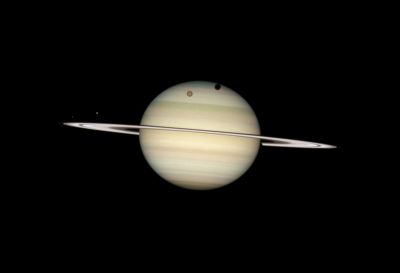The journal Science has published evidence
from the Cassini spacecraft's orbit of Saturn which points to 'a
10-kilometer-thick layer of water beneath the south polar region [of
Enceladus], if not the entire moon.' In 2005, the Cassini spacecraft
took images of plumes at the moon's South Pole. This was the first
indication that Enceladus, barely 500 kilometres in diameter, could have
water, and thus, the potential for life.
Since then, scientists have been able to analyse information from
Cassini's19 times flights near Enceladus. According to NASA, three
flybys, from 2010 to 2012, yielded precise trajectory measurements. 'The
gravitational tug of a planetary body, such as Enceladus, alters a
spacecraft's flight path. Variations in the gravity field, such as those
caused by mountains on the surface or differences in underground
composition, can be detected as changes in the spacecraft's velocity,
measured from Earth.'
NASA says that these gravity measurements, which are deduced using a
concept called the Doppler Effect, suggest a large, possibly regional,
ocean about 10 kilometres deep, beneath an ice shell about 30 to 40
kilometres thick.
If this secret ocean does exist then Enceladus might be leading the
inter-planetary race for the place where we are most likely to find ET.
The fact that the body of water on Enceladus might be in contact with
rocks is a very important factor. As the Guardian notes, 'Because the
water is in contact with the moon's rocky core, elements useful for
life, such as phosphorus, sulfur and potassium, will leach into the
ocean.'
But the race is not won yet. NASA concedes that there is no
certainty that a subsurface ocean supplies the water plume that
scientists have spotted on Enceladus, however it is a real possibility.
Reacting to the news, NewScientist impatiently asks 'If there might
be life there, when can we go?'. Unfortunately, there are no firm plans
for future craft to return to Saturn. However, Cassini team member
Carolyn Porco at the Space Science Institute in Boulder, Colorado, has
written a paper arguing for a mission to collect samples from Enceladus
and return them to Earth. We are eagerly watching this space!
Source: Magazyn Science
Reference documents: Based on a paper published in Science and media reports.

